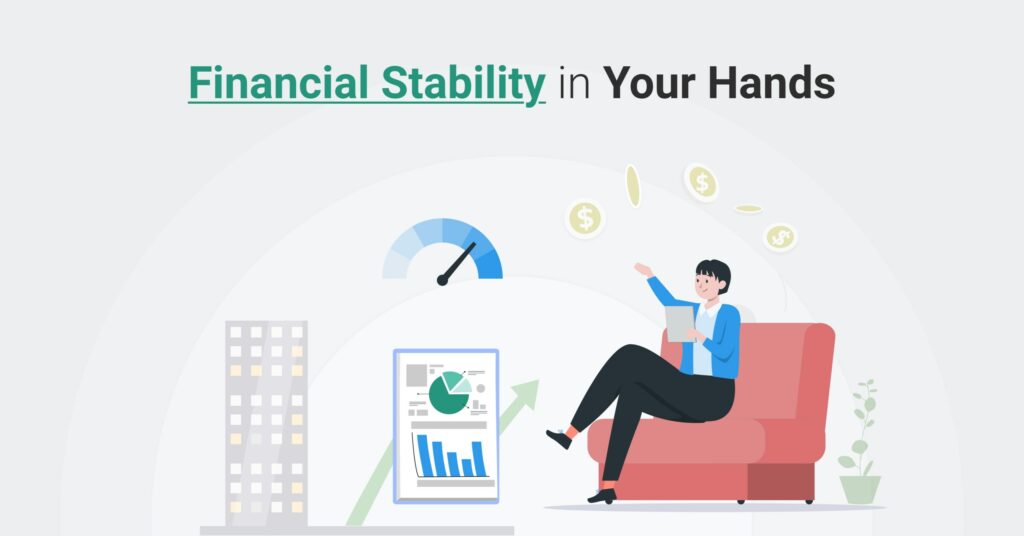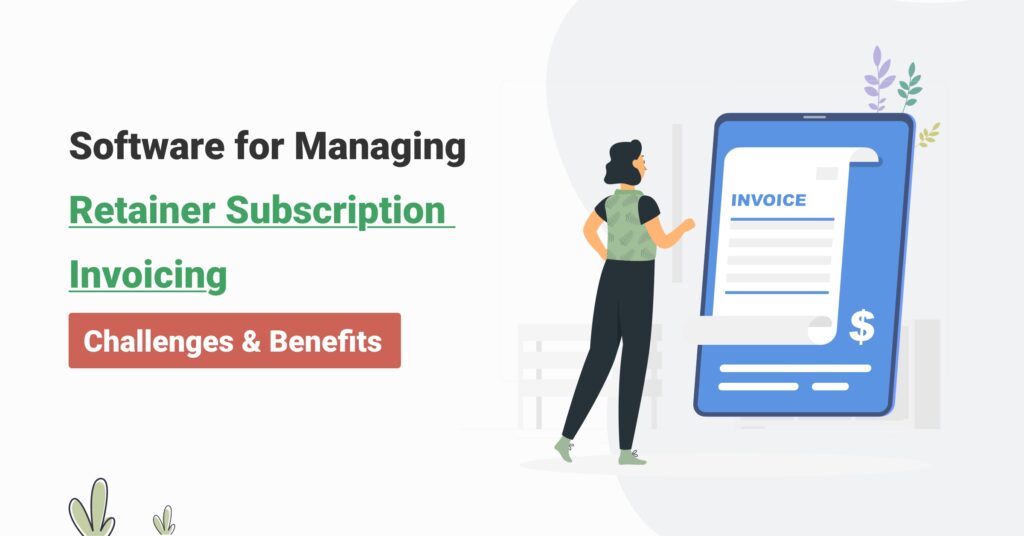Table of Contents
A retainer subscription is an agreement where clients pay in advance for future work, ensuring that your business is compensated before services are delivered. This business model has become increasingly popular among professional services firms, such as legal, consulting, marketing, and IT services that often need to secure payment in advance for ongoing client work. This model offers a predictable revenue stream and fosters long-term client relationships.
However, managing retainer subscriptions and invoicing can be complex, presenting challenges that necessitate specialized software solutions. This article explores the problems addressed by such software and the benefits of adopting it for professional services businesses.
Challenges in Managing Retainer Subscription Invoicing
Complex Billing Cycles
Retainer agreements often involve different billing cycles—monthly, quarterly, or annually. Managing these cycles manually or with generic invoicing tools can lead to errors, delayed payments, and client dissatisfaction. Software tailored for retainer models automates these cycles, ensuring timely and accurate billing.
Variable Workloads and Adjustments
Unlike traditional fixed-fee projects, retainers may involve varying workloads from month to month. Adjusting invoices to reflect the actual work done, unused hours, or additional services can be challenging without specialized tools. Software designed for retainers allows for dynamic adjustments, ensuring clients are billed correctly.
Tracking and Reporting
Professional services firms often struggle with tracking hours worked against retainer agreements, monitoring usage, and reporting this data to clients. Manual tracking is time-consuming and prone to errors. Retainer management software typically includes time-tracking features that integrate directly with invoicing, providing accurate reporting and transparency.
Cash-Flow Management
For firms relying on retainers, consistent cash flow is crucial. Delays in invoicing or errors in subscription management can disrupt this flow, leading to financial instability. Automated invoicing software helps maintain regular cash inflows by ensuring that invoices are sent out on time and payments are tracked efficiently.
Client Communication and Relationship Management
Keeping clients informed about their retainer status, usage, and any additional charges is essential for maintaining trust. Manual processes can lead to miscommunication and disputes. Software that integrates client communication with invoicing helps keep all parties on the same page, reducing the risk of misunderstandings

Benefits of Using Retainer Subscription Invoicing Software
Efficiency and Time Savings
Automating invoicing processes saves significant time for both administrative staff and professionals. This efficiency allows the firm to focus more on delivering quality services rather than managing billing.
Accuracy and Compliance
By automating the complex calculations involved in retainer billing, the software reduces the risk of human error. This accuracy is particularly important in industries with strict regulatory requirements, ensuring that firms remain compliant.
Enhanced Client Satisfaction
Clear, accurate, and timely invoices contribute to client satisfaction. Software that allows clients to view their retainer usage and understand how their fees are being applied can build trust and long-term relationships.
Scalability
As a professional services firm grows, managing an increasing number of retainer agreements can become overwhelming. Software solutions scale with the business, handling more clients and more complex agreements without additional strain on resources.
Customizable Billing Options
Many professional services firms require flexibility in how they bill their clients. Whether it’s offering discounts for early payment, applying carry-over hours, or handling one-off charges, retainer management software can accommodate these needs through customizable billing templates and options.
Better Financial Planning and Forecasting
With detailed insights into recurring revenue, outstanding invoices, and client payment histories, businesses can more effectively plan their finances and forecast future income. This data-driven approach to financial management helps firms make informed decisions about growth and investment.
Improved Cash Flow
By ensuring timely invoicing and providing clients with easy payment options, retainer management software helps improve cash flow. Automated reminders and integrated payment gateways make it easier for clients to pay on time, reducing the need for follow-up and minimizing late payments.
Integration with Other Business Tools
Many retainer management software solutions can integrate with accounting software, CRM systems, and project management tools. This integration provides a seamless workflow, from managing client relationships to tracking work and issuing invoices.
For professional services businesses adopting a retainer model, managing subscription invoicing effectively is critical to success. The complexity of billing cycles, the need for accurate tracking and reporting, and the importance of maintaining cash flow make manual processes insufficient and error-prone. Retainer subscription invoicing software addresses these challenges by automating and streamlining the invoicing process, enhancing efficiency, accuracy, and client satisfaction. As a result, firms can focus on delivering high-quality services while ensuring financial stability and growth. Adopting such software is not just a technical upgrade; it’s a strategic move that positions businesses to thrive in a competitive marketplace.



1 Comment
Great insights! The challenges of managing retainer subscriptions can really be overwhelming, especially with the complexities of varying workloads and cash flow management. I appreciate how you highlighted the efficiency and accuracy that specialized software can bring to the table. It’s also reassuring to see how these tools enhance client communication and satisfaction—building trust is crucial in our line of work! I’m curious if there are any particular software solutions you’d recommend for small to medium-sized firms just starting with retainer agreements?